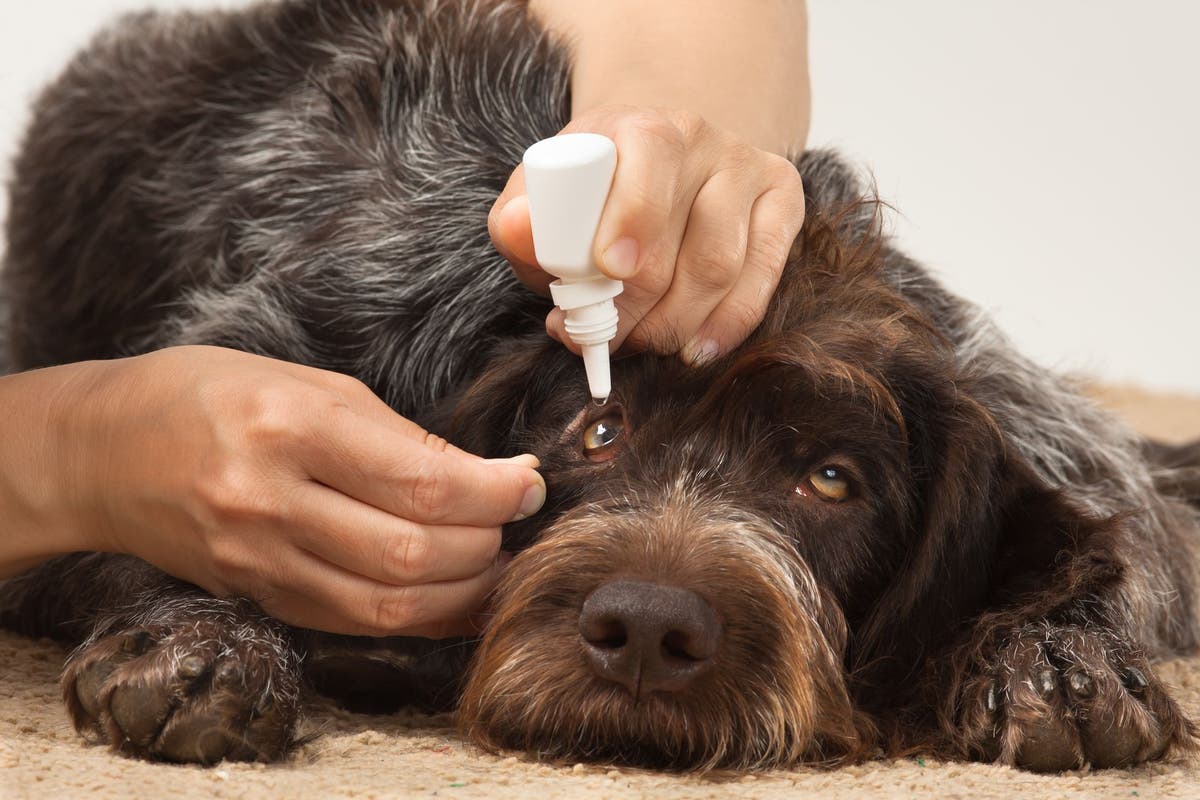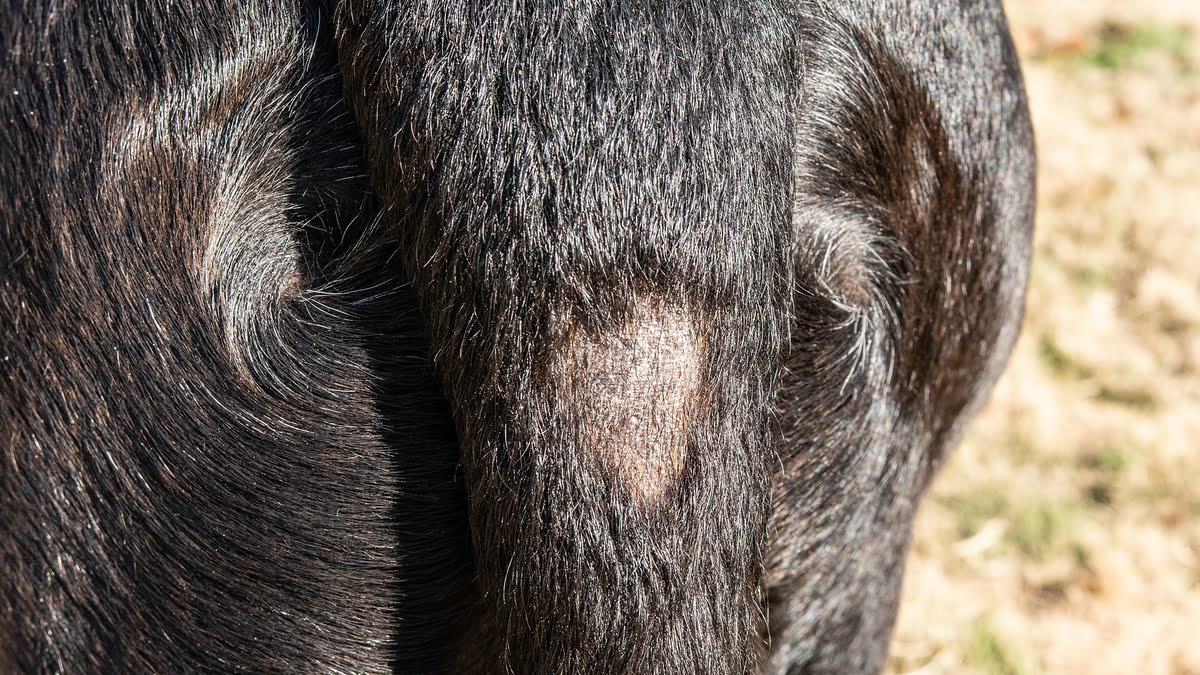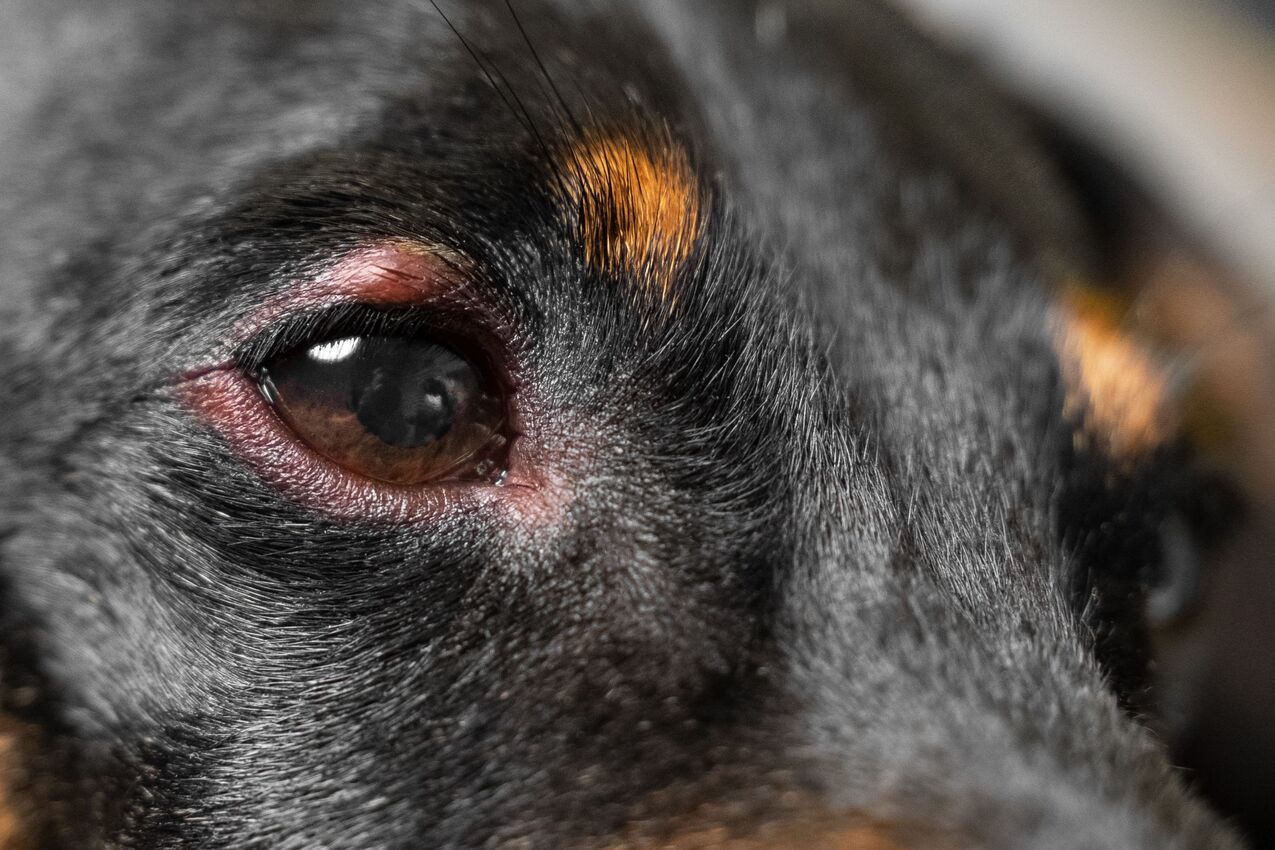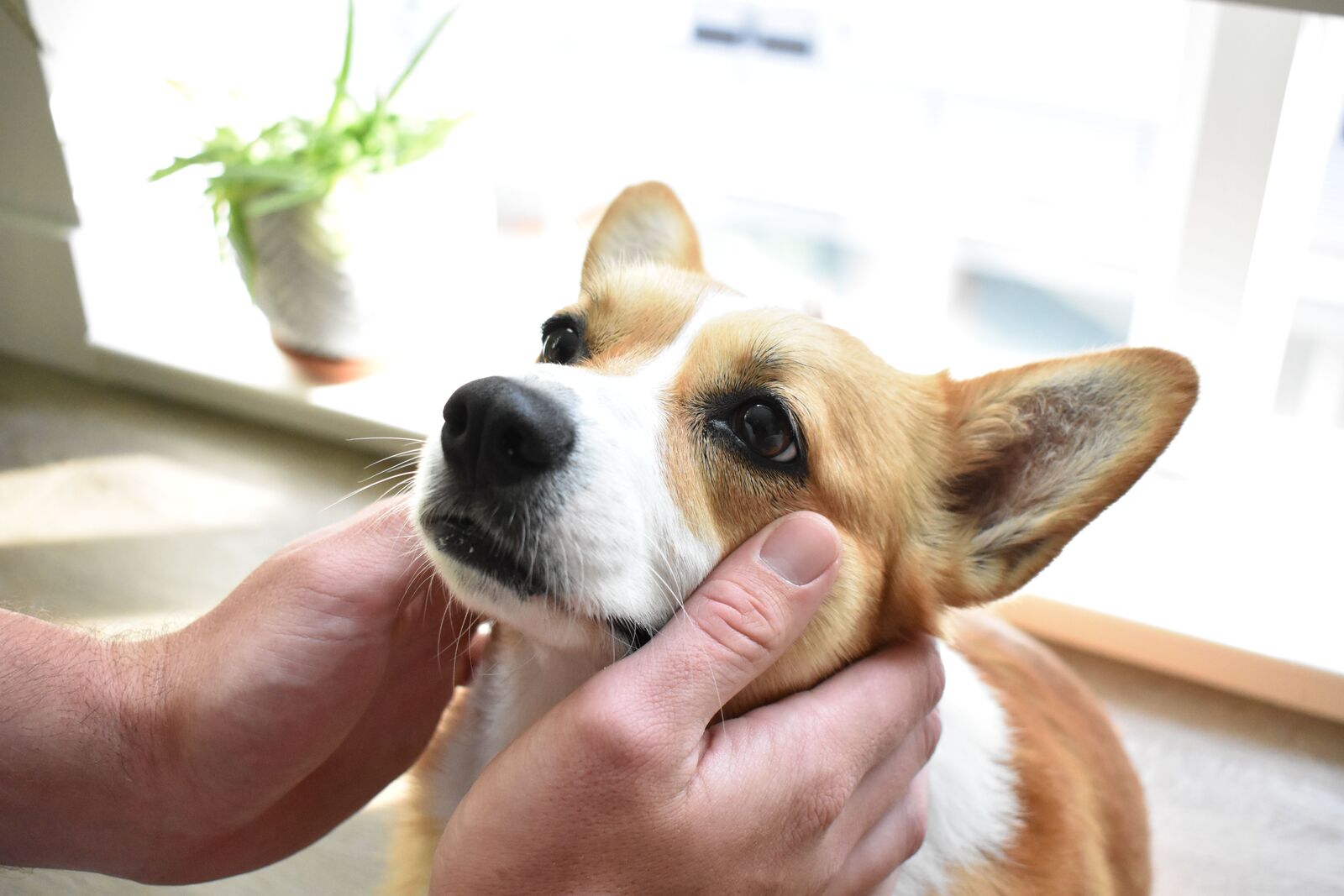Home>Health & Wellness>Common Health Issues>What Kind Of Parasite Can Attach To A Dog’s Eye


Common Health Issues
What Kind Of Parasite Can Attach To A Dog’s Eye
Published: February 8, 2024
Learn about common health issues in dogs, including what kind of parasite can attach to a dog's eye. Protect your pet's health with expert advice.
(Many of the links in this article redirect to a specific reviewed product. Your purchase of these products through affiliate links helps to generate commission for Pawsomeoldies.com, at no extra cost. Learn more)
Table of Contents
Introduction
When it comes to our furry companions, their health and well-being are of utmost importance. Dogs, being naturally curious and adventurous creatures, can sometimes encounter health issues that require our attention. One such concern is the possibility of parasites attaching to their eyes, leading to discomfort and potential complications.
Parasitic infections in a dog's eye can be a cause for concern for pet owners, as they can lead to various symptoms and discomfort for the affected canine. Understanding the types of parasites that can attach to a dog's eye, the associated symptoms, treatment options, and preventive measures is crucial for ensuring the overall health and happiness of our beloved pets.
In this comprehensive guide, we will delve into the common parasites that can attach to a dog's eye, the symptoms of parasitic eye infections in dogs, available treatment options, and effective preventive measures. By gaining insight into these aspects, pet owners can equip themselves with the knowledge needed to identify, address, and prevent parasitic eye infections in their canine companions. Let's embark on this informative journey to safeguard the ocular health of our loyal four-legged friends.
Common parasites that can attach to a dog's eye
-
Ticks: Ticks are notorious for latching onto various parts of a dog's body, including the eye area. These blood-sucking parasites can cause irritation, inflammation, and even transmit diseases such as Lyme disease and Rocky Mountain spotted fever.
-
Mites: Mites, particularly the Demodex and Sarcoptes species, can infest a dog's eye, leading to a condition known as ocular mange. This can result in intense itching, redness, and discomfort for the affected canine.
-
Flies: Certain species of flies, such as the face fly, can lay eggs near a dog's eye, leading to the development of maggots. This infestation, known as myiasis, can cause significant distress and potential damage to the eye if left untreated.
-
Fleas: While fleas are commonly associated with infesting a dog's fur, they can also target the sensitive eye area. Flea bites around the eyes can lead to itching, redness, and potential allergic reactions in some dogs.
-
Lice: Although less common, lice infestations can occur in a dog's eye region, leading to itching, irritation, and potential hair loss in the affected area.
Understanding the potential parasites that can attach to a dog's eye is crucial for pet owners to recognize the signs of infestation and take appropriate measures to address the issue promptly. By being aware of these common culprits, pet owners can be proactive in safeguarding their dog's ocular health and well-being.
Symptoms of parasitic eye infections in dogs
Parasitic eye infections in dogs can manifest through various noticeable symptoms, indicating the presence of a potential infestation. It's essential for pet owners to be vigilant and attentive to any changes in their dog's ocular health. Here are the common symptoms of parasitic eye infections in dogs:
-
Excessive Tearing: Dogs with parasitic eye infections may exhibit increased tear production, leading to noticeable wetness around the eyes. This excessive tearing can be a result of irritation caused by the presence of parasites or their secretions.
-
Redness and Inflammation: The affected eye or eyes may appear red and inflamed, indicating an immune response to the presence of parasites. Inflammation can contribute to discomfort and may be accompanied by visible swelling.
-
Squinting or Blinking: Dogs experiencing discomfort due to parasitic eye infections may squint or blink excessively. This behavior is a natural response to alleviate discomfort and protect the affected eye from further irritation.
-
Rubbing or Pawing at the Eye: Infected dogs may frequently rub or paw at the affected eye in an attempt to relieve itching or discomfort caused by the presence of parasites. This behavior can exacerbate the irritation and potentially lead to secondary complications.
-
Visible Presence of Parasites: In some cases, pet owners may observe the actual presence of parasites in or around the dog's eye. This can include ticks, mites, or fly larvae, indicating a clear infestation that requires immediate attention.
-
Cloudiness or Discharge: Parasitic eye infections can lead to the development of cloudy or purulent discharge from the affected eye. The presence of discharge can indicate an ongoing infection and the need for prompt veterinary evaluation.
-
Changes in Behavior: Dogs experiencing discomfort due to parasitic eye infections may exhibit changes in behavior, such as increased irritability, restlessness, or a reluctance to engage in activities they typically enjoy. These behavioral changes can be indicative of underlying discomfort and distress.
-
Visible Damage to the Eye: In severe cases, parasitic eye infections can lead to visible damage to the eye, including corneal ulcers, abrasions, or other trauma. These manifestations require immediate veterinary intervention to prevent further complications.
By recognizing these symptoms of parasitic eye infections in dogs, pet owners can promptly seek veterinary care and implement appropriate treatment measures to alleviate discomfort and address the underlying infestation. Additionally, early detection of these symptoms can contribute to preventing the progression of parasitic eye infections and minimizing potential complications for the affected canine companion.
Treatment options for parasitic eye infections in dogs
Upon identifying a parasitic eye infection in a dog, prompt and effective treatment is essential to alleviate discomfort, address the underlying infestation, and promote ocular health. Veterinary intervention is crucial in devising a tailored treatment plan based on the specific parasite involved and the severity of the infection. Here are the common treatment options for parasitic eye infections in dogs:
-
Topical Medications: In cases of parasitic eye infections, veterinarians may prescribe topical medications such as ointments or eye drops specifically formulated to target the identified parasites. These medications often contain active ingredients designed to eliminate the parasites and alleviate associated symptoms. Application instructions and frequency will be provided by the veterinarian to ensure proper administration.
-
Oral Medications: For certain parasitic infestations, oral medications may be prescribed to effectively combat the underlying infection. These medications are administered orally and are designed to target the parasites systemically, addressing infestations that may extend beyond the immediate eye area.
-
Manual Removal: In instances where visible parasites, such as ticks or fly larvae, are present in the dog's eye, manual removal may be necessary. This delicate procedure is typically performed by a veterinarian to ensure the safe and complete extraction of the parasites without causing further trauma to the eye.
-
Anti-inflammatory Treatment: Inflammation and discomfort associated with parasitic eye infections can be addressed through the use of anti-inflammatory medications. These treatments aim to reduce swelling, alleviate pain, and promote the healing process in the affected eye.
-
Supportive Care: Alongside specific medications, supportive care measures may be recommended to aid in the dog's recovery. This can include gentle cleansing of the affected eye, the application of soothing eye washes, and the implementation of environmental modifications to prevent re-infestation.
-
Follow-up Care: After initiating treatment, follow-up appointments with the veterinarian are essential to monitor the dog's progress, assess the effectiveness of the treatment, and make any necessary adjustments to the treatment plan. This proactive approach ensures that the parasitic eye infection is effectively managed and that the dog's ocular health is restored.
It is important to note that the specific treatment approach for parasitic eye infections in dogs may vary based on the type of parasite involved, the dog's overall health, and any potential complications arising from the infection. Pet owners should adhere to the veterinarian's recommendations, administer medications as prescribed, and provide a comfortable and conducive environment for their canine companion's recovery.
By promptly addressing parasitic eye infections with appropriate treatment measures, pet owners can effectively alleviate discomfort, prevent potential complications, and support their dog's journey towards restored ocular health and well-being.
Preventing parasitic eye infections in dogs
Preventing parasitic eye infections in dogs is a proactive approach that focuses on minimizing the risk of infestation and safeguarding the ocular health of canine companions. By implementing effective preventive measures, pet owners can significantly reduce the likelihood of their dogs encountering parasitic eye infections. Here are essential strategies to prevent parasitic eye infections in dogs:
-
Regular Grooming and Inspection: Maintaining a regular grooming routine for dogs is crucial in preventing parasitic eye infections. Thoroughly inspecting the dog's fur, particularly around the eye area, can help identify and promptly address any signs of potential infestation. Regular grooming also aids in the removal of debris and potential parasites that may pose a risk to ocular health.
-
Parasite Control Products: Utilizing vet-recommended parasite control products, such as topical treatments, oral medications, and collars, can effectively prevent parasites, including ticks, fleas, and mites, from infesting a dog's fur and eye area. These products provide a protective barrier against parasites and contribute to overall parasite prevention.
-
Environmental Management: Maintaining a clean and well-maintained environment for dogs can minimize the risk of parasitic infestations. Regularly cleaning living spaces, removing potential breeding grounds for parasites, and implementing pest control measures contribute to creating an environment that is less conducive to parasitic infestations.
-
Regular Veterinary Check-ups: Scheduling regular veterinary check-ups for dogs allows for comprehensive health assessments, including ocular examinations. Veterinarians can identify early signs of potential parasitic infestations and provide guidance on preventive measures tailored to the dog's specific needs.
-
Preventative Medications: In regions where certain parasites are prevalent, veterinarians may recommend preventative medications to protect dogs from potential infestations. These medications, such as anti-parasitic treatments, serve as a proactive measure to minimize the risk of parasitic eye infections.
-
Education and Awareness: Pet owners can benefit from educating themselves about the common parasites prevalent in their geographical area and the associated risks to their dog's ocular health. Awareness of potential threats enables proactive measures to be taken, reducing the likelihood of parasitic eye infections.
-
Hygiene Practices: Practicing good hygiene, including regular cleaning of the dog's living and resting areas, as well as proper disposal of waste, contributes to minimizing the presence of parasites and reducing the risk of ocular infestations.
By incorporating these preventive strategies into their care routines, pet owners can effectively mitigate the risk of parasitic eye infections in their dogs, promoting long-term ocular health and well-being. Proactive prevention not only safeguards the dog's ocular health but also fosters a comfortable and thriving environment for our beloved canine companions.
Conclusion
In conclusion, the ocular health of our canine companions is a vital aspect of their overall well-being, and the threat of parasitic eye infections underscores the importance of proactive care and vigilance. By understanding the common parasites that can attach to a dog's eye, recognizing the symptoms of parasitic eye infections, exploring treatment options, and embracing preventive measures, pet owners can play a pivotal role in safeguarding their dog's ocular health.
The presence of parasites such as ticks, mites, flies, fleas, and lice can lead to discomfort, inflammation, and potential complications in a dog's eye. It is essential for pet owners to remain attentive to any changes in their dog's ocular health, including excessive tearing, redness, squinting, visible parasites, and changes in behavior. Early recognition of these symptoms empowers pet owners to seek prompt veterinary care and initiate appropriate treatment measures to address parasitic eye infections effectively.
When it comes to treatment, veterinary intervention is crucial in devising tailored approaches, which may include the use of topical and oral medications, manual removal of parasites, anti-inflammatory treatments, and supportive care. Additionally, follow-up care and adherence to the veterinarian's recommendations are essential in ensuring the successful management of parasitic eye infections and the restoration of the dog's ocular health.
Furthermore, preventive measures such as regular grooming and inspection, the use of parasite control products, environmental management, regular veterinary check-ups, preventative medications, education, and hygiene practices are instrumental in minimizing the risk of parasitic eye infections in dogs. By integrating these strategies into their care routines, pet owners can create a protective shield against parasitic infestations, fostering a healthy and comfortable environment for their beloved canine companions.
In essence, the well-being of our dogs is intricately linked to their ocular health, and by staying informed, proactive, and attentive, pet owners can effectively mitigate the risk of parasitic eye infections. Through a combination of knowledge, preventive measures, and prompt veterinary care, we can ensure that our loyal four-legged friends enjoy a life free from the discomfort and complications associated with parasitic eye infections. Let us continue to prioritize the ocular health of our canine companions, nurturing a bond built on care, compassion, and unwavering dedication.














